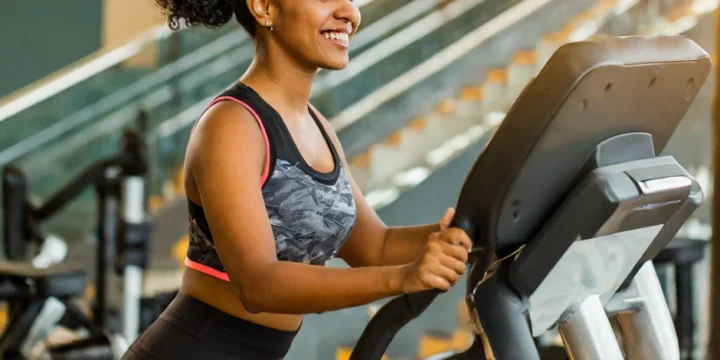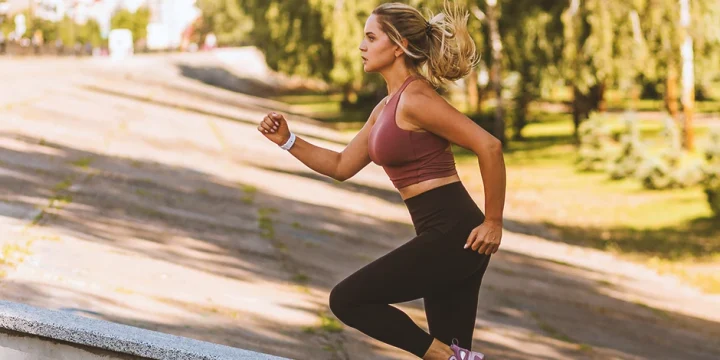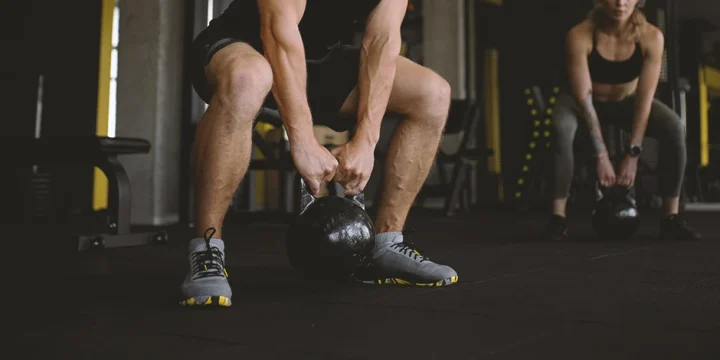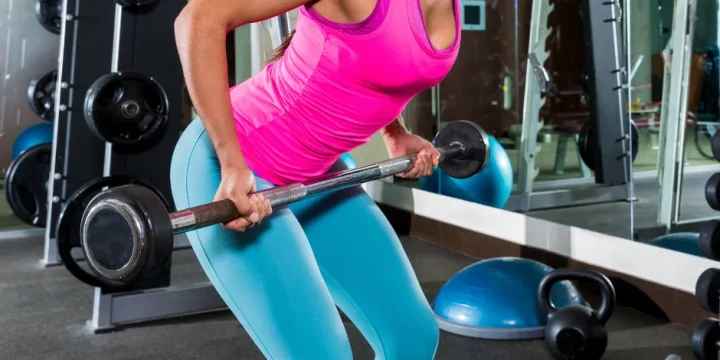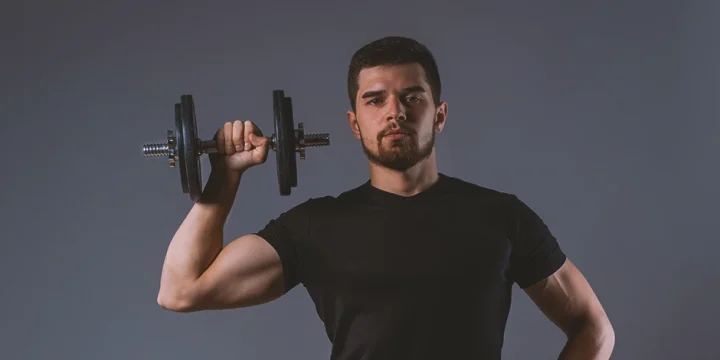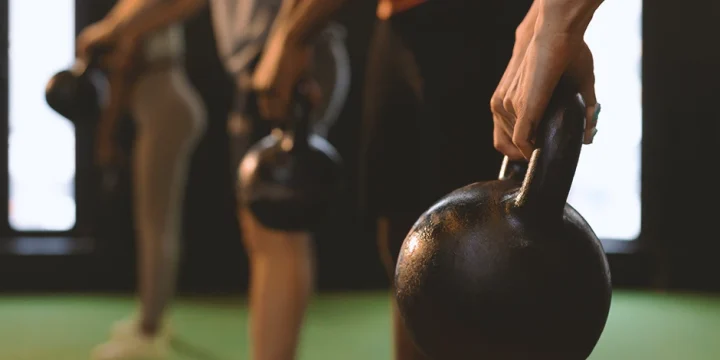As a certified fitness coach, I encourage my clients to perform shoulder workouts to develop and strengthen the muscles supporting these joints.
Most of them ask if it's possible to do that without weights.
And yes, you can perform many at-home workouts to engage the muscles of the shoulders.
In this article, I will provide the anatomy of the shoulder, the benefits of training your shoulders, and my expertise and findings on the best at-home shoulder workouts.
Quick Summary
- While exercising your shoulders at home without weights, you must find ways to impact each section of the muscle group, including the rotator cuffs and deltoids, using your body weight as resistance and ordinary household items.
- The shoulders move in two directions. The first movement is a push, encompassing workouts like push-ups and handstands. The second occurs when you lift an object away from your body.
- Research Gate studies indicate that maintaining correct posture enhances focus, happiness, and self-assurance
- In my experience as a fitness coach, prioritizing shoulder workouts not only enhances physical appearance but also significantly contributes to overall well-being and confidence.
The Best at Home Shoulder Workout

1. Dumbbell Lateral Raise
The dumbbell lateral raise is significant for targeting your middle and lateral deltoid.
Dumbbell lateral raises are a fantastic dumbbell exercise for the upper body that specifically targets the shoulders and increases breadth, resulting in a "V" shape.
How to perform:
- Stand tall, feet hip-width apart, arms extended at your sides while holding a pair of dumbbells.
- Lift your arms to the sides, parallel to your shoulders. Maintain a downward grip with your palms.
- Lower your arms slowly back to the starting position.
- Repeat for the desired number of reps.
Read More: Best Full-Body Dumbbell Exercises
2. Shoulder Press with Towel
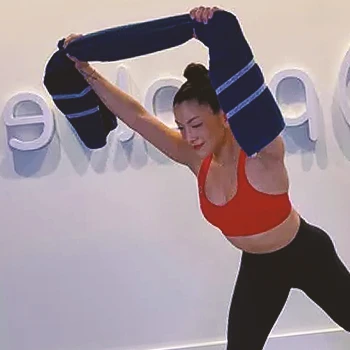
You will require a towel for this shoulder workout. The press of the shoulder with a towel targets your anterior, middle, and posterior deltoids, triceps, trapezius, and pectoralis minor.
How to perform:
- Roll your towel into a cylinder. Hold both ends of the towel with your hands and feet shoulder-width apart. Tuck both elbows in and downward so the towel is near your chest.
- Pull the towel apart.
- Raise both hands and towel over your head until the arms are completely stretched and above your head. Continue to pull the towel apart.
- Lower your arms slowly back to the starting position.
- Repeat for the desired number of reps.
Read More: Best Bodyweight Shoulder Exercises
3. Scarecrow Press
The scarecrow press is a variant of the standard shoulder press. From my experience, this is an excellent approach to working on the rotator cuff muscle.
You can perform this shoulder workout using a resistance band or a pair of dumbbells.
How to perform:
- Take a staggered stance while holding a pair of dumbbells and lift your hands to your sides, elbows bent at 90 degrees.
- The upper arms must parallel the shoulders, and the hands should point upward. This is your starting point.
- Bring both forearms before you, then reverse the action to return to where you started.
- Press the dumbbells precisely over your shoulders, then change the motion to return to the starting position.
- Repeat for reps.
Additionally, exploring shoulder stability exercises can enhance the effectiveness of the scarecrow press and promote overall shoulder joint health.
4. Face Pulls
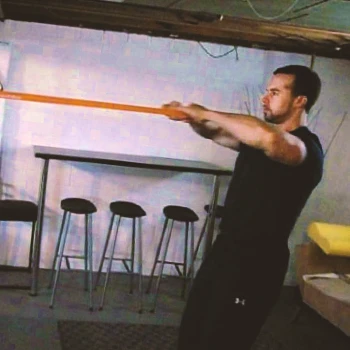
The face pull is an excellent alternative shoulder workout for targeting the rear and lateral deltoid.
For many lifters, the rear delt is a lagging muscle area, and weaker rear delts can result in bad posture; hence, executing the face pull is highly recommended.
You will need light resistance bands for this shoulder workout.
How to perform:
- Wrap the resistance band around a pole or other vertical object.
- Hold the ends with your hands facing in.
- Bend the knees slightly and pull the resistance band closer to your face, bringing your hands to either side.
- Return the band to its starting position in a controlled movement.
- Repeat for the desired number of reps.
5. Military Shoulder Presses
This dumbbell shoulder workout trains the whole deltoid muscle and is excellent for muscle building.
This shoulder workout also targets your traps, triceps, and pecs.
How to perform:
- With a dumbbell in each hand, stand tall with both feet shoulder-width apart. With a staggered stance, step one leg slightly forward.
- Raise your weights to shoulder height, palms facing in.
- Keep your arms straight above the shoulders. Maintain a straight back and tighten your core.
- Return the weights to shoulder height slowly.
- Repeat for the desired number of reps.
Also Read: 13 Best Barbell Shoulder Exercises
6. Dumbbell Front Raise
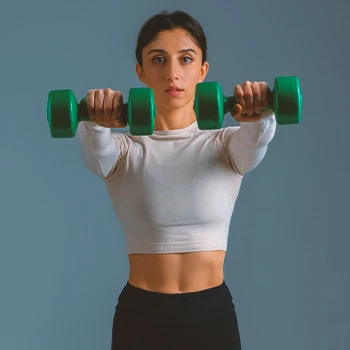
The dumbbell front raise is a valuable dumbbell shoulder workout for building strength or adding shape to the shoulders.
You can perform the dumbbell front raise with an underhand (supinated) or pronated (palms down) grip.
How to perform:
- Take a pair of dumbbells and stand tall.
- Lift one dumbbell with the palms facing down until the arm is slightly above and parallel to the floor.
- Pause, then gently drop the hand back to starting position.
- Repeat with the other arm, switching sides until you complete the set.
7. Pike Push-Up
Pike push-ups are excellent for strengthening the shoulders.
This shoulder workout may be used as a stepping stone to more complex movements or as a goal to improve your shoulder strength.
The key is to maintain good form to keep your shoulders healthy.
How to perform:
- Begin in a plank posture on the floor, with your palms firmly on the ground beneath your shoulders. Press down your toes into the floor as well.
- Maintain a firm core and a flat back using your hamstrings and glutes. Your entire body should be neutral and in a straight line.
- Raise your hips up and backward until your torso forms an inverted V. Maintain as much straightness as possible in your arms and legs.
- Begin by bending your elbows, then drop your upper body to the ground.
- Remain in that posture for a while, then gently push back up with arms straight until you're in the inverted V position. Maintain control of the movement at all times.
- Repeat for the desired number of reps.
8. Bench Dips
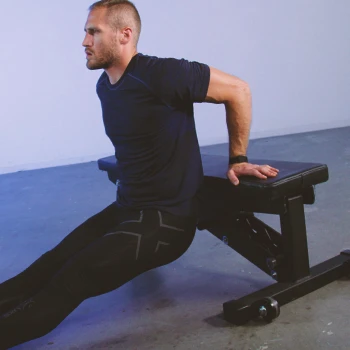
While the triceps are the primary muscles engaged in dips, they can also be a shoulder workout as they also benefit from this exercise.
Bench dips engage the triceps, pecs, rhomboids, levator scapulae, lats, and delts.
How to perform:
- Sit on a chair's edge.
- Grab the chair's edge with both hands shoulder-width apart. Move off the chair and support yourself with your arms. If you need additional space, place two chairs side by side, one hand on each.
- Drop yourself as far as possible with the elbows pulled into your torso.
- Return to the starting position by pushing yourself up.
- Repeat for the desired number of reps.
Consider incorporating nutritional tips for shoulder health, as a well-balanced diet contributes to overall muscle development and shape.
Shoulder Anatomy

The shoulder both supports and causes shoulder girdle motions.
They connect the upper limb's appendicular skeleton to the trunk's axial skeleton.
Four of them are located on the front portion of the shoulder, while the rest are on the posterior and rear of the shoulder.
Shoulder Extrinsic Muscles
- Trapezius: They are shaped like a triangle, going down the spine and over the shoulder blade, bracing the arm and shoulder as you elevate it. You have trapezius muscles on both sides of your body.
- Latissimus Dorsi: According to the National Institute of Health, this muscle aids in each hand's extension and inner rotation and is more widely known as your "lat" muscle [1].
- The levator scapulae muscle: As the name indicates, it helps elevate the scapula bone (shoulder bone), which links the humerus (upper arm bone) and the collarbone (clavicle).
- Rhomboids: These rhombus-shaped muscles are mainly accountable for scapula retraction. They are separated into left and right and placed in the shoulder blades' center on the upper back.
Shoulder Intrinsic Muscles

- Deltoids: This triangle-shaped muscle is placed atop the shoulder and is named after the Greek letter delta. It is divided into three primary muscle fibers: posterior, anterior, and middle, all linked by a thick tendon. The fact that shoulder exercises are almost synonymous with exercising your "delts" demonstrates this muscle's significance. As a result, your delts serve as a foundation for activities such as arm rotations and injury prevention.
- Teres Major: This tiny muscle extends from the bottom of the shoulder blade to the rear of the armpit. Teres major has received the nickname "Lat's little helper" because of its relationship with the latissimus dorsi as shown by the National Library of Medicine reports [2].
- Rotator Cuff: This combination of muscles and tendons is responsible for the upper arm bone from popping out of the shoulder socket frequently. The rotator cuff muscles, unsurprisingly, encircle the shoulder joint.
Benefits of Shoulder Workouts

Strong shoulders may enhance your posture, but that isn't the only advantage.
When you mix shoulder strength training with shoulder stretches, you gain the flexibility and power to accomplish everyday tasks easily. Strong shoulders also aid in preventing rotator cuff injuries.
"The muscles that surround the shoulder blade have a significant impact on how the shoulder moves. If those muscles aren't working together—if one is stronger or bigger than the other—it may cause shoulder discomfort and even injury."
- Geoff Rose, Certified Strength & Conditioning Specialist
Here is an in-depth look at the benefits of training your shoulders:
Prevent Injury
As a certified fitness coach, I've witnessed the importance of shoulder training in preventing significant damage.
The upper arm ball is positioned precariously in the shoulder socket, making it vulnerable to various unpleasant mishaps and occurrences, including dislodgement.
Through my experience with clients, I've found that strengthening the muscles supporting this joint is a simple yet effective way to avoid such issues.
Easy workouts such as shoulder presses, downward dogs, standing shoulder circles, lateral or front raises, and push-ups are excellent for this.
Improves Posture
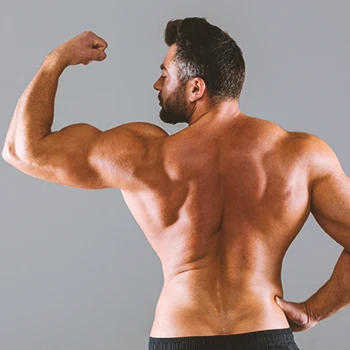
Shoulder exercises will enhance your posture, making you look leaner and improving your entire back and core strength.
Drawing from my experience as a fitness coach, I've seen how dedicated shoulder exercises contribute significantly to better posture.
It's not just a physical change; it positively impacts attention, happiness, and confidence.
These observations align with studies by Research Gate, reinforcing the holistic benefits of incorporating shoulder workouts into your routine [3].
Other benefits include:
- Strengthening the shoulders with weight training is connected to greater strength in other upper-body muscles, notably the back, and chest.
- Strong shoulders may boost the strength of chest workouts, particularly the bench press.
- Weight training causes your bones to respond to the tension imposed by the added strain from the weight, which helps avoid bone-loss diseases such as osteoporosis as you age.
FAQs
Can You Build Shoulder Muscles Without Weights?
Yes, you can build shoulder muscles without weights. While free weights, pulleys, and resistance bands are all effective methods, you may also grow shoulder muscle mass using only your body weight.
What Home Exercises Build Shoulders?
Home exercises that build shoulders are incline push-ups, crab walks, pike push-ups, plank-up, and push-back push-ups.
How Can I Train My Shoulders at Home Without Weights?
You can train your shoulders at home without weights by performing exercises such as wall walks, incline push-ups, plank rockers, and bear crawls that target all the muscles of the shoulders.
References:
- https://www.ncbi.nlm.nih.gov/books/NBK448120/
- https://www.ncbi.nlm.nih.gov/books/NBK580487/
- www.researchgate.net/publication/227671856
About The Author
You May Also Like
